Reach range and floor space
Posted on - Friday, March 24th, 2017Obstructed High Reach Range
ADA Section 308 gives us guidance on the different types of reach ranges required for persons with disabilities. Most of us understand the high reach and the low reach; forward approach and side approach; unobstructed and obstructed. But there is a subtle rule that is not always understood. The obstructed reach range in a forward approach:
308.2.2 Obstructed High Reach. Where a high forward reach is over an obstruction, the clear floor space shall extend beneath the element for a distance not less than the required reach depth over the obstruction….
In other words, the space provided at the floor underneath the obstruction should equal or be greater than the distance to the object you are reaching for. For example, if you are reaching for a faucet over a counter, and the faucet is 19″ away from the edge of the counter, then there should be 19″ of clearance at the floor space.
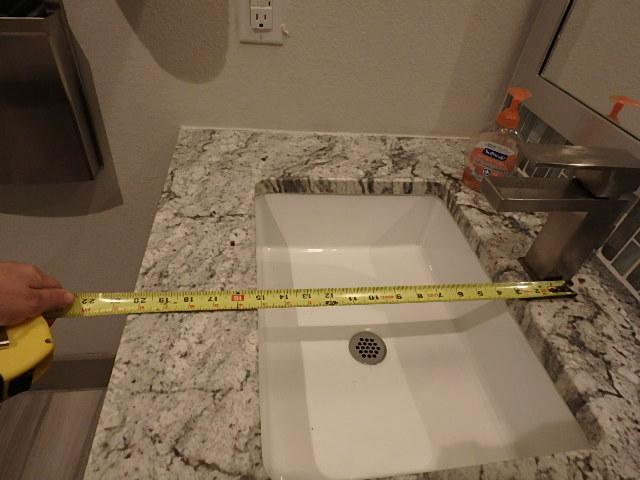
The faucet in this lavatory was located 20″ away from the edge of the counter
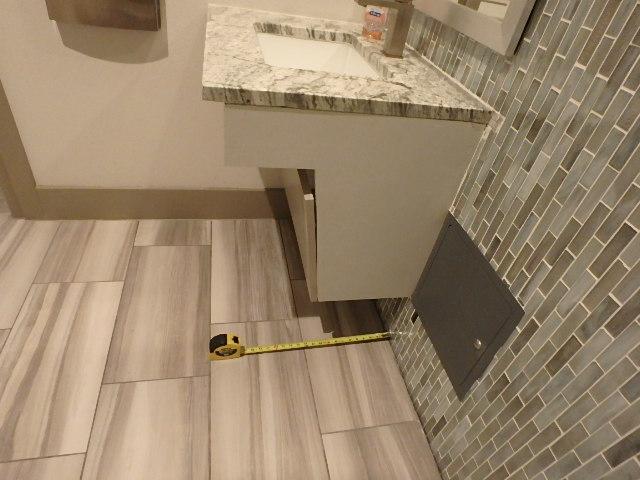
The required floor space should be a minimum 20″ to match the reach range for the faucet on the top of the sink. In this case the floor space is 24″ the same as the sink counter
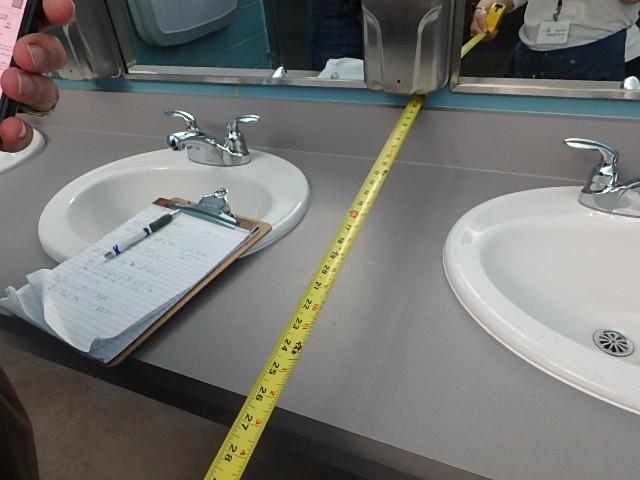
This soap dispenser is 26″ away from the edge of the counter. Because the allowable forward approach reach over an obstruction cannot exceed 25″, It is not compliant no matter how much clear floor space we provide.
Sometimes the floor space is obstructed by a base board or maybe piping. When detailing keep in mind the distance you will need to be compliant.
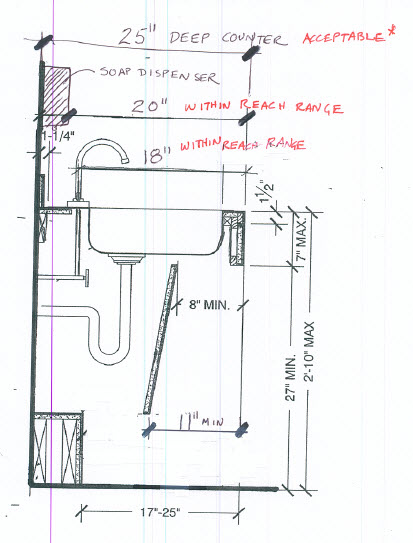
This detail shows blocking at the back wall which is dimensioned 17″-25″ from the edge of the counter to the base board. This would be correct only if the objects we are reaching for (soap dispensers, faucet etc.) was located at 17″ from the edge. The section shows the toilet accessories and fixtures mounted 18″-20″ away. Therefore it is not a compliant reach range.
One thing to keep in mind is that the clear floor space is referring to the clearance right on the floor. It is different than the knee and toe clearance (although part of those clearances occur on the floor as well)
Need CEUs
Green CE On Demand Webinar: “Understanding the 2010 ADA Standards for Accessible Design”
Green CE On Demand webinar “How Accessible is Your work place?”
Green CE On Demand webinar “ADA and Residential Facilities”
AIA U online course: “Applying the ADA on Existing and Altered Buildings”
or
Green CE “Applying the ADA on Existing and Altered Buildings”
If you are interested in Building Code seminars check out my colleague Shahla Layendecker with SSTL Codes
If you want to learn more about these standards, be sure to check out my books:
“The ADA Companion Guide” “Applying the ADA” published by Wiley.
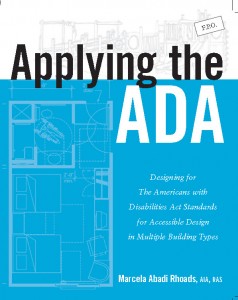

They are available for sale now. (also available as an e-book)
If you have any questions about these or any other topics, please feel free to contact me anytime.
Marcela Abadi Rhoads, FAIA RAS #240
Abadi Accessibility
214. 403.8714
marhoads@abadiaccess.com
www.abadiaccess.com
 Abadi
Abadi 
